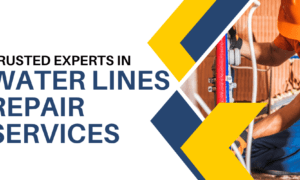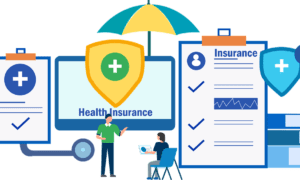The business landscape of today is very competitive, where customer experience reigns supreme, with it being one of the key differentiators. Now, the frontline of this environment of customer interaction has a pivotal role: the call centers. They help reshape the customer experience.
Hence, for a high-quality and consistent service, it is the responsibility of businesses to establish a solid quality assurance (QA) framework. So, come and let’s uncover the essential elements, strategies, and best practices on how to build a practical quality assurance framework for call centers.
Knowing quality assurance for call centers
Quality assurance for call centers surrounds all the systematic processes to monitor, analyse, and enhance customer interactions. The primary goal here is to guarantee that the services delivered by agents align with corporate standards and customer expectations. Therefore, a well-organized quality assurance framework helps pinpoint performance gaps and also helps drive continuous development, resulting in improved customer satisfaction and operational efficiency.
Key components of the quality assurance framework
We shall now explore the vital components that make up the foundation of an effective quality assurance framework, which is listed below.
Clear objectives and KPIs
The very first aspect of building a solid QA framework is to establish clear objectives. These may cover multiple contexts, such as increased first-call resolution rates, improved customer satisfaction, or lowered call-handling time. If these are the objectives set, various KPIs can be utilised to measure them, including average handle time (AHT), first-call resolution (FCR), net promoter score (NPS), and customer satisfaction score (CSAT).
Standardised evaluation criteria
Evaluation procedures should be consistent. This means developing standardised scorecards outlining the criteria for call assessment, such as communication skills, adherence to protocols and scripts, and problem-solving abilities. This standardisation warrants fair and objective evaluations throughout the board.
Periodic monitoring and assessment
Regular and consistent monitoring is vital to keep track of and spot pattern shifts, strengths, and areas with potential scopes of improvement. Leveraging call recordings and real-time monitoring software to analyse agent conversations with customers helps maintain adequate service quality and addresses issues promptly.
Extensive training and development
Quality assurance not only consists of determining faults but also fostering growth. Utilising valuable insights from various assessments helps to design tailored training programs. Additionally, continuous learning opportunities, including coaching sessions, e-learning modules, and workshops, enable agents to enhance their performance and skills altogether.
Feedback mechanisms
Another integral part of quality assurance for call centers is constructive feedback. This encompasses giving agents timely, specific, and actionable reviews based on performance assessments. It also fosters a two-way feedback culture that empowers agents to share their thoughts and perspectives, building a unified environment.
Use of technology and analytics
Call centers should take advantage of advanced quality assurance tools and analytics platforms to simplify processes. AI-driven insights, sentiment analysis, and speech analytics can offer a more profound understanding of customer interactions, determine trends, and also predict probable roadblocks before they take a significant turn.
Compliance and risk management
Ensuring adherence to industry regulations and company policies is vital in any industry. Thus, a solid quality assurance framework includes risk assessments, regular audits, and compliance checks to alleviate risks associated with privacy, data security, and regulatory compliance.
Steps to create a robust QA framework
Now that we have covered the various key elements necessary for a quality assurance framework, below is a step-by-step guide on how to design, build, and implement an effectively tailored QA framework for your call center.
Define quality standards
The first step to building a QA framework for the call center is to define the quality standards precisely. These standards must align with the center’s business goals, industry benchmarks, and customer expectations. Then, these documented standards serve as a clarity and reference point for all the upcoming QA activities.
Design the quality assurance process
Next, the QA procedure should be outlined, consisting of pointers on who is to conduct the assessments, how frequent it will be, and how calls will be monitored. One must ensure the transparency of the overall process and that it is well-informed to all the stakeholders.
Develop assessment tools
Specific assessment tools need to be generated, like feedback forms, checklists, and scorecards. These tools must also be highly adaptable to align to different call scenarios and flexible to accommodate changes as the situation demands.
Implement monitoring systems
To ensure efficient monitoring and assessment, live monitoring tools, QA software, and call recording systems should be deployed. Now, it must also be assured that these systems are capable of being integrated with other performance management and CRM tools for a comprehensive view.
Train QA teams and agents
Managers and quality assurance analysts should receive comprehensive training on feedback delivery, evaluation techniques, and data interpretation on the latest. Along with them, agents should also be regularly trained on performance expectations, self-assessment practices, and quality standards.
Hold regular reviews and calibration sessions
Conducting timely feedback meetings and calibration sessions ensures a degree of consistency in assessment across a variety of QA analysts. Plus, calibration sessions help to align the understanding of defined quality standards that lead to a reduction in subjective biases.
Evaluate data and drive continuous improvement
Data analytics can be used for various purposes, including determining shifts in patterns, determining the root cause of escalating issues, and identifying areas for improvement. Based on the analysis’s outcome, an appropriate action plan can be implemented, which will help refine the whole QA framework to become more adaptable to changing business needs.
Closure
Therefore, building a unique quality assurance for call centers is not just taking a walk in the water. It has now become a business necessity that serves as the foundation of exceptional customer experiences and business growth. By having a well-defined idea of the business objectives, taking advantage of the potential advanced technology, and fostering a work dynamic of continuous improvement, enterprises can truly enhance their whole QA process.
During the process, it should be kept in mind that QA is not just about monitoring calls but also about empowering agents to reach their best potential, creating satisfied customers, and paving the way for sustainable business success.





























